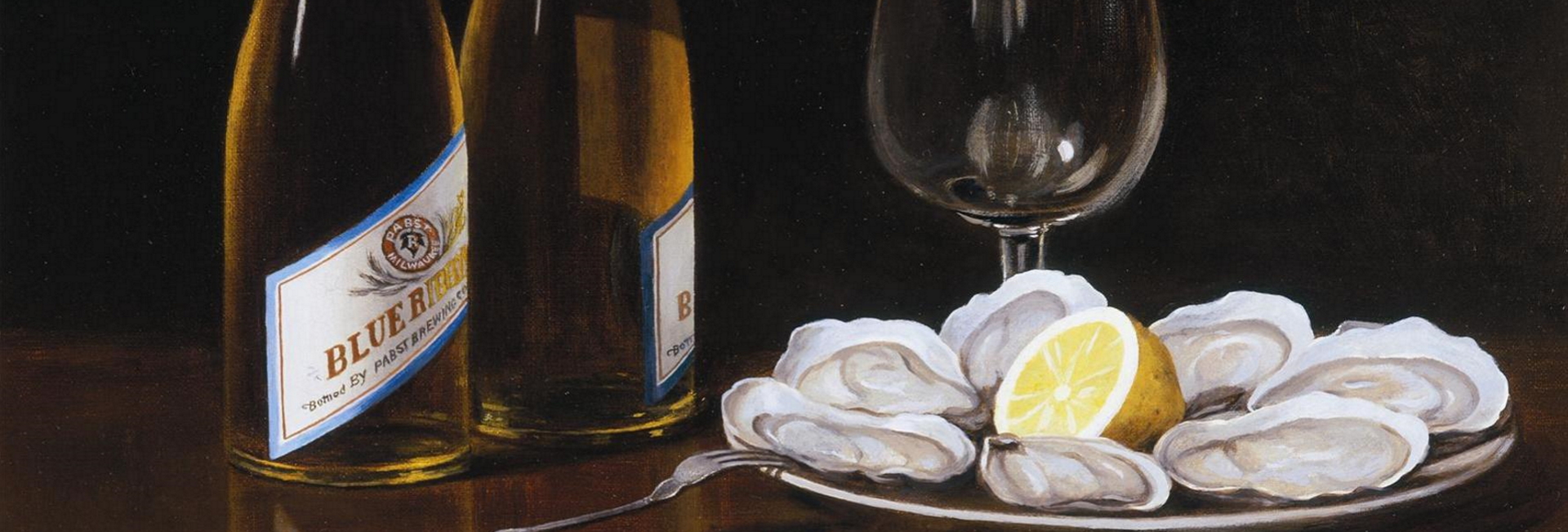By Pabst Mansion
Captain Frederick Pabst was a revolutionary businessman during the 19thcentury. He was able to stand out amongst his competitors with his innovative business strategies and was not afraid to take risks. One of the reasons he was so successful was that he integrated his business with aspects of the community and hobbies that people enjoyed. He never stopped trying new methods to expand his company and resources. The Pabsts were heavily invested in the arts as evidenced by their support of local theatres, artists and art associations, as well as their personal art collection. During the construction of their mansion, and arguably one of the most important houses in Milwaukee, the Pabsts were set on filling their home with artwork. Captain Pabst and his wife were beginners to the art scene, but they knew what art they each enjoyed and bought according to their personal taste. Overall, most of the art collected by the Pabsts fits three key themes: the sea, genre paintings of cheerful ordinary life, and female beauty.
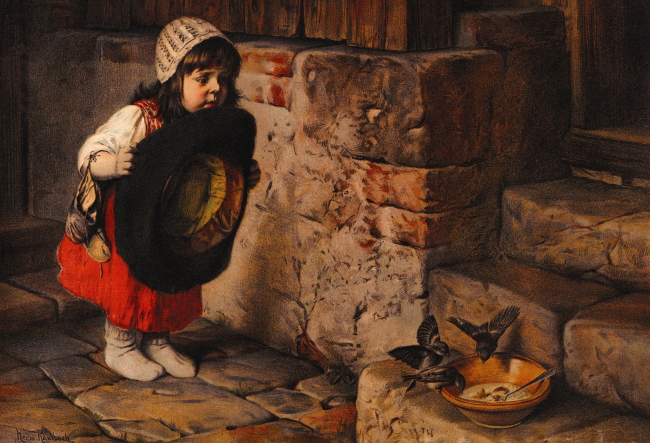
‘The Little Trapper’ by Hermann Kaulbach (German, 1864-1915), c. 1890
Once becoming enamored by the art world the walls of his home, brewing company, restaurant and other establishments were covered with works of art. Captain Pabst was even chosen to be the director of the Milwaukee Industrial Exposition Association that promoted the city’s interest in art. In addition to promoting the city’s art scene, he saw the advantages of advertising his brand through the beauty of art. Pabst’s personal painting The Little Trapper, by Hermann Kaulbach, was used to promote Pabst Malt Extract at the turn of the 20th century. Pabst offered a lucrative deal of buying six bottles of Pabst Malt Extract to receive a free reproduction of the painting now labeled Baby’s First Adventure. He was successful in dispensing thousands of copies to loyal customers. It was an inventive business method at the time and Pabst was one of the first to ever do it. I would personally love to receive a nice reproduction when buying a beverage.
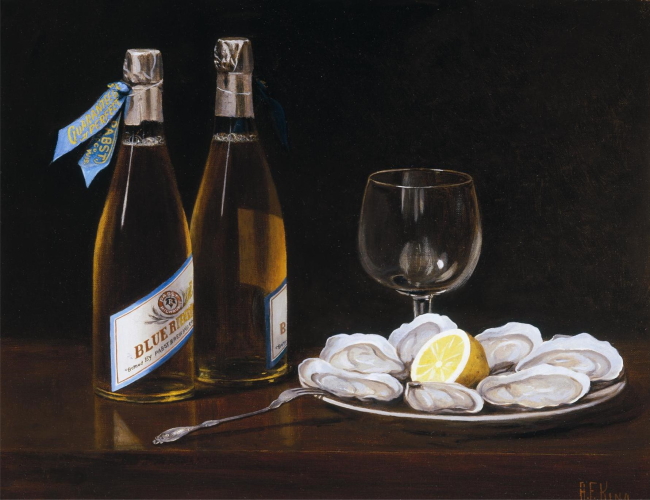
‘Pabst and Oysters on the Half Shell’ by Albert Francis King (American, 1854-1945), c. 1898
The concept of using artwork to advance sales intrigued Pabst during the 1890s when they had just finished changing the name of their signature beer product from from Select to Pabst Blue Ribbon. He then hired well-known artist, Albert Francis King, to paint a wonderful picture of their newest product to promote interest in the rebranding. King painted two images for the commission, with Pabst settling on the one focusing on a plate of oysters with two unopened bottles of Pabst beer and an empty glass. I imagine the oysters were included because of the popularity of oysters in Milwaukee or Captain Pabst’s love for the sea. Either way, just staring at the painting for too long can make somebody crave a refreshing Pabst Blue Ribbon beer.
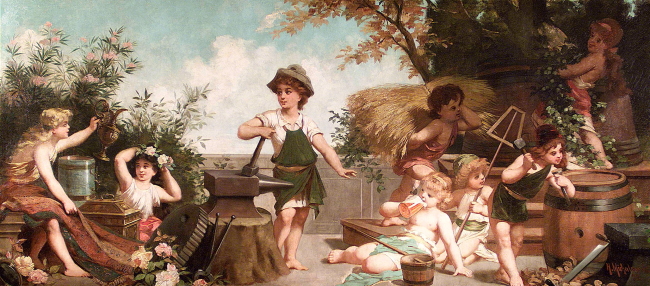
‘The Art of Brewing’ by Hermann Michalowski (German, 1860-1903), 1893
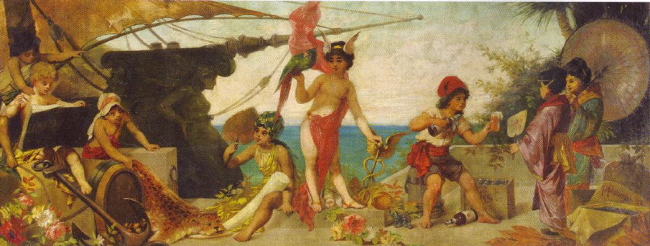
‘Pabst Brought to the East; by Herman Michalowski (German, 1860-1903), c.1893
Another set of unusual paintings that were used to assist in advertising campaigns of the Pabst Brewing Company were The Art of Brewing and Pabst Brought to the East. Both murals were created by the same artist, Hermann Michalowski. Oddly enough, these paintings featured children as the main subjects. Today, many people would argue that it is inappropriate, but the 1890s interpretation would have differed. The artist meant for the children in both paintings to symbolize the purity of the product since kids are viewed as inherently good and kind. It is also interesting to note that the Pabst Brought to the East painting, featuring the presentation of beer to Japanese girls, was also made with the intent to expand to an international market. The impact of these murals seems to have the dual effect of being visually appealing while also subliminally influencing potential patrons.
Written by Will McClure

